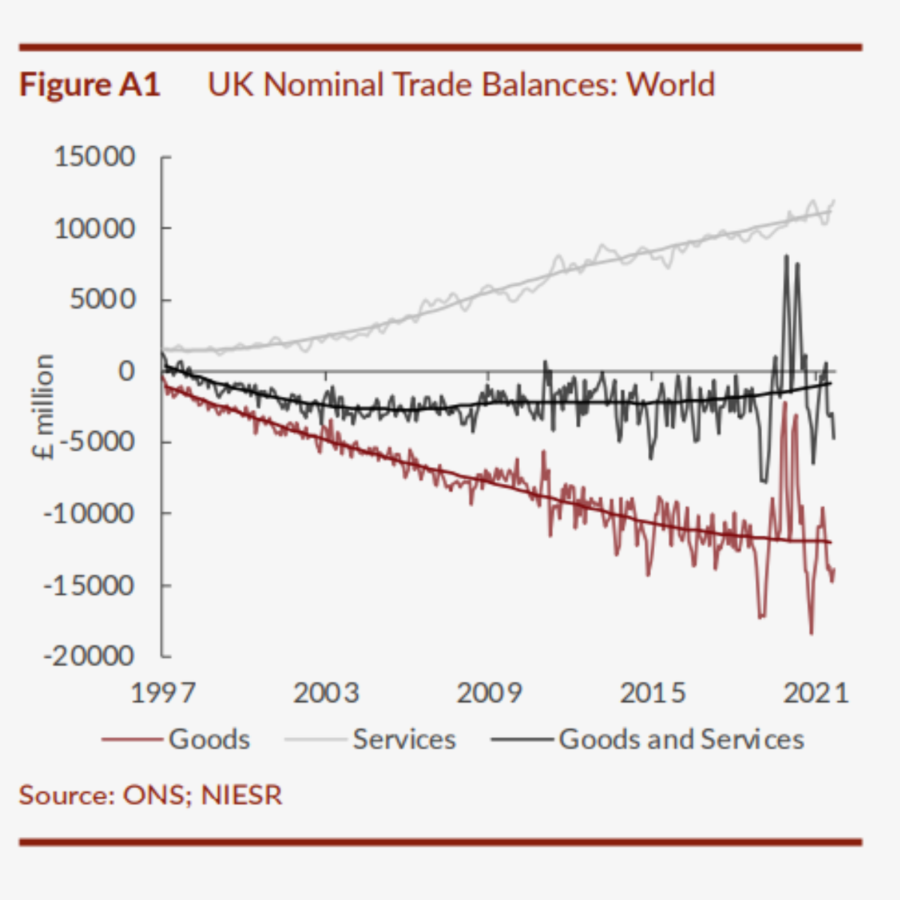- Home
- Publications
- Improved Trade Balance With The European Union Raises Challenging Brexit Questions
Improved Trade Balance with the European Union Raises Challenging Brexit Questions
There has been a significant improvement in the UK’s net trade performance with the European Union (EU) since the 2016 Brexit vote. The previous negative trend in the real net trade balance with EU has not only stopped but is improving.
 Pub. Date
Pub. Date
 Pub. Type
Pub. Type

Main points
- In 2015 and 2016, the overall trade balance was in deficit by £30 billion and £33billion, respectively. In 2017 and 2018, the deficit was slightly smaller, at £26 billion and £28 billion, with a fall to under £21 billion in 2019.
- In 2020, the year of Brexit and Covid-19, there was a surplus of £3 billion, and in the first eleven months of 2021 a deficit re-emerged, running at an annual rate of £21 billion. In 2020 and 2021 taken together, the trade balance looks likely to average a deficit of £10 billion a year, compared with a deficit three times as large before Brexit.
A plausible reason for these developments is that the Brexit vote led to a sharp sterling depreciation, making the UK significantly more competitive while crimping domestic demand. However, Covid-19 and a dramatic drop in the EU’s overall trade balance are also likely important influences.
This is a preview from the Quarterly UK Economic Outlook, February 2022
Related Blog Posts

Inflation Still Likely to Fall to 2 per cent or Below Next Month
Huw Dixon
17 Apr 2024
8 min read



What is the Current State of the UK Economy?
Paula Bejarano Carbo
Stephen Millard
26 Feb 2024
7 min read
Related Projects
Related News


Why it’s not worth worrying that the UK has technically entered a recession
26 Feb 2024
4 min read

1.2 million UK Households Insolvent This Year as a Direct Result of Higher Mortgage Repayments
22 Jun 2023
2 min read

The Key Steps to Ensuring Normal Service is Quickly Resumed in the Economy
13 Feb 2023
4 min read
Related Publications

Recessionary Pressures Receding in the Rearview Mirror as UK Economy Gains Momentum
12 Apr 2024
GDP Trackers
Related events

Summer 2023 Economic Forum

Spring 2023 Economic Forum

Winter 2023 Economic Forum

Autumn 2022 Economic Forum

Summer 2022 Economic Forum

Spring 2022 Economic Forum

Winter 2022 Economic Forum

Autumn 2021 Economic Forum






